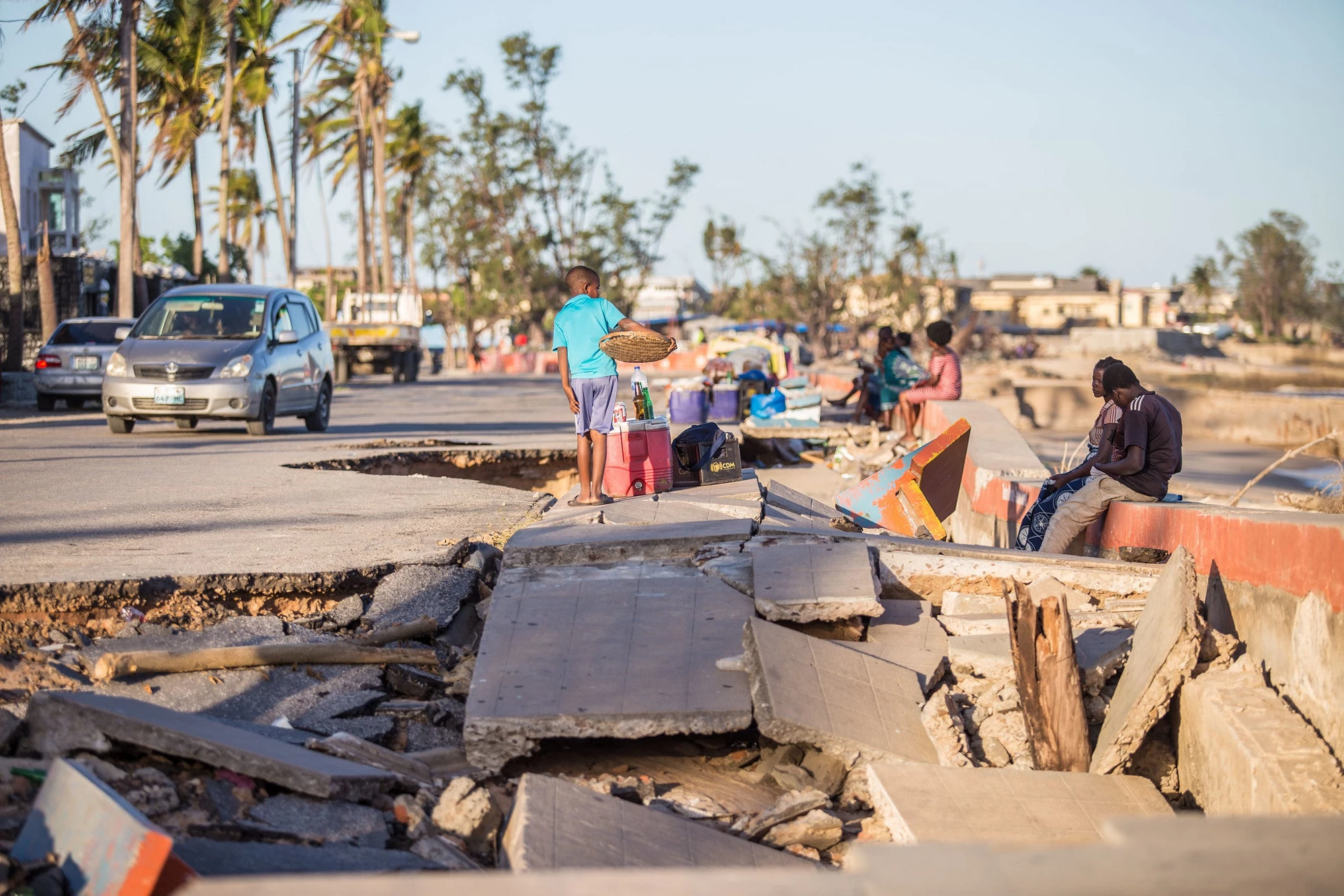 Beira, Mozambique. Photo: Sarah Farhat / World Bank
Beira, Mozambique. Photo: Sarah Farhat / World Bank
Take the first number: every year, power and transport infrastructure assets in low and middle-income countries face $18 billion in direct damages from floods, storms, and other natural hazards. For some countries, especially the poorest and most vulnerable, these repair costs create major obstacles to closing the infrastructure gap and providing universal access to basic services such as water and sanitation, modern energy, or easy access to jobs and services. They are also responsible for building high levels of debt that can threaten economic stability.
Now consider the second number: altogether, infrastructure disruptions cost households and firms in developing countries at least $390 billion a year, and a large proportion of these disruptions are caused by natural hazards. These impacts range from businesses unable to keep factories running or be able to process payments to people unable to go to work, send children to school, or get to a hospital. Even moderate floods in Kampala today, block enough streets to make it impossible for over a third of the population to reach a hospital during a medical emergency. And where the electric grid cannot be trusted, a business cannot prosper without its own generator, making it more difficult for people to create new firms and jobs. In many places, vulnerable people are left without basic services for months or even years. The implications of a changing climate on development and poverty are striking.
But there is good news. Around the world, there are many examples of investments that make infrastructure systems more resilient, and more economically robust. The extra cost of building resilience into these systems is estimated to be only three percent of overall investment needs. And, thanks to fewer disruptions and avoided economic impacts, the overall net benefit of investing in the resilience of infrastructure in developing countries could be up to $4.2 trillion over the lifetime of new infrastructure. That is a $4 benefit for each dollar invested in resilience.
This means investing in smart regulations and planning, in risk assessments at the early stages of project design, as well as in maintenance. These additional costs are small compared to the large repair and reconstruction costs they can prevent. It also means making long-term climate risks visible to investors and governments by, for instance, expanding transparency and disclosure requirements, so that investments can flow to the right kinds of infrastructure.
It also requires investing in being better prepared. Earlier this year, after cyclone Idai hit Mozambique, the city of Beira faced less damaging flooding than the rest of the country thanks to a number of resilience-boosting improvements, such as a rehabilitated storm water drainage system, newly installed flood control stations and a water retention basin.
As disasters are becoming more predictable, we must make disaster response more predictable as well. Thanks to advances in technology and financial know-how, many countries are already working out how to ensure they bounce back quicker and better after natural disasters strike. For instance, people can use accessible technology from their cellphones to map risk in their own communities. Governments can draw from more accurate data to prepare for disasters like droughts and hurricanes and quickly assess damages. And ministries can also plan ahead of time for smaller, more frequent events by setting aside funds in their budgets; and for larger, costlier events, by working with markets that are ready to bear some of that risk.
When countries have the tools to assess risk, prepare for risk, and respond to risk, they can build resilience at all levels of the economy. That translates into at the macro-level, countries being better prepared for shocks; at the meso-level, firms, critical supply chains, and critical infrastructure getting back into action more quickly; and at the micro-level, households, assets, and livelihoods being protected.
Investing in resilience is not about roads or bridges or powerplants alone. It is about investing in people, businesses, and communities who are facing the impacts of a changing climate and about smarter development that can deliver health, education and livelihoods.


Join the Conversation